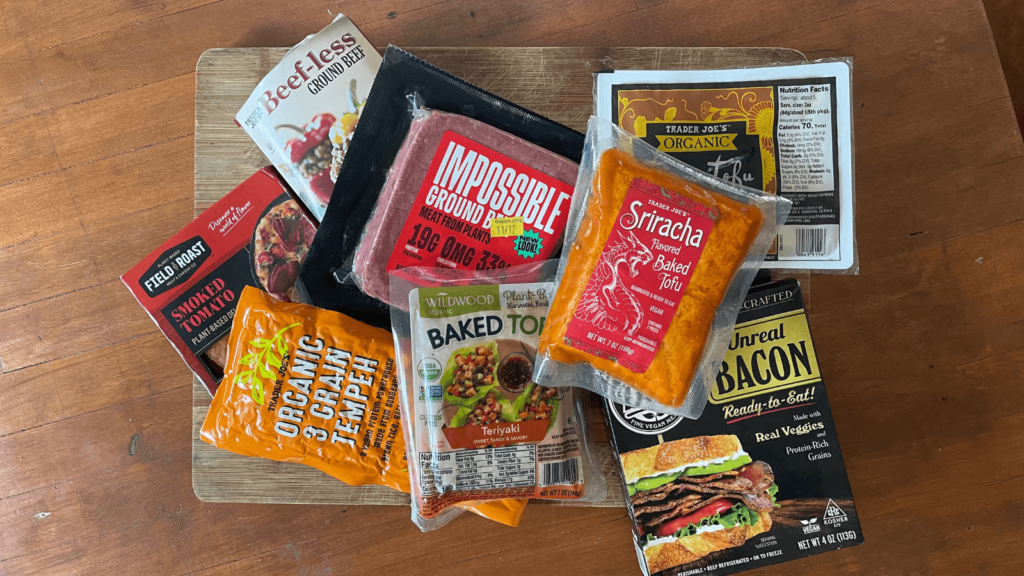In the event you’re uninterested in the identical previous protein shakes or simply wish to reduce on meat, you’re in luck — crops are right here to save lots of the day. From seeds to legumes, the highest plant sources of protein ship the advantages of a protein-rich veggie food regimen together with fiber, antioxidants, and different vitamins distinctive to plant-based meals. Whereas supplementing with one of many best protein powders isn’t a foul thought, all diets ought to prioritize entire meals, which is why we’ve assembled among the prime sources of plant-based protein.
Editor’s observe: The content material on BarBend is supposed to be informative in nature, but it surely shouldn’t take the place of recommendation and/or supervision from a medical skilled. The opinions and articles on this web site will not be supposed to be used as prognosis, prevention, and/or therapy of well being issues. Converse along with your doctor or nutritionist when you have any considerations.
Key Takeaways
- The advice for every day protein consumption, 0.36 grams per pound of physique weight, will be met by way of a plant-based food regimen.
- Tempeh is without doubt one of the greatest plant protein sources, containing 34 grams per 1-cup serving. (1)
- Plant-based diets have been proven to cut back dangers of most cancers, diabetes, coronary heart illness, stroke, and different life-threatening ailments. (2)
- Plant sources of protein are additionally nice sources of iron, magnesium, fiber, and B nutritional vitamins.
The High 11 Greatest Plant Sources of Protein (Ranked by Protein Content material)
In the event you’re attempting to placed on muscle or keep your beneficial properties throughout weight reduction, getting sufficient protein will be simply as difficult as ensuring you’re sticking to your health routine. That is very true for these following a high-protein vegan or plant-based food regimen, the place vegan and vegetarian protein sources typically have decrease protein density in comparison with animal proteins.
“It was as soon as believed that plant-based diets are insufficient for muscle development. In actual fact, current analysis has proven that vegan diets can produce equal outcomes when in comparison with an omnivorous food regimen; nonetheless, it’s necessary to give attention to the quantity of protein consumed,” says BarBend professional contributor and registered dietitian Austin Bou.
Since many plant-based proteins lack some important amino acids, you’ll wish to eat a wide range of totally different meals. That will help you write up your subsequent grocery listing, we’ve highlighted among the greatest plant-based protein sources, ranked by protein content material per serving. And earlier than you dive in, check out our protein intake calculator to get an estimate of how a lot protein you want every day to help your objectives.
1. Tempeh
Tempeh has 34 grams of protein per cup. (1) It’s a plant-based meals that originated in Indonesia and is comprised of fermented soybeans, which give it its agency texture and barely nutty taste. Tempeh is a flexible meat substitute that can be utilized in soups, sauces, chilis, and even sliced into skinny strips and pan-fried for use in sandwiches or salads.
In accordance with the US Division of Agriculture (a supply we’ll use all through this text) a half-cup serving delivers 195 energy, 11 grams of fats, and seven grams of carbohydrates, in addition to noteworthy quantities of calcium, magnesium, iron, and potassium. (3)
2. Tofu
Tofu is probably the best staple in my plant-based food regimen, because of its versatility and value in a vegan sports nutrition plan. Its refined taste simply absorbs marinades, and you need to use tofu so as to add a success of protein to virtually any meal, from pad thai or a stir fry to lettuce wraps and kebabs.
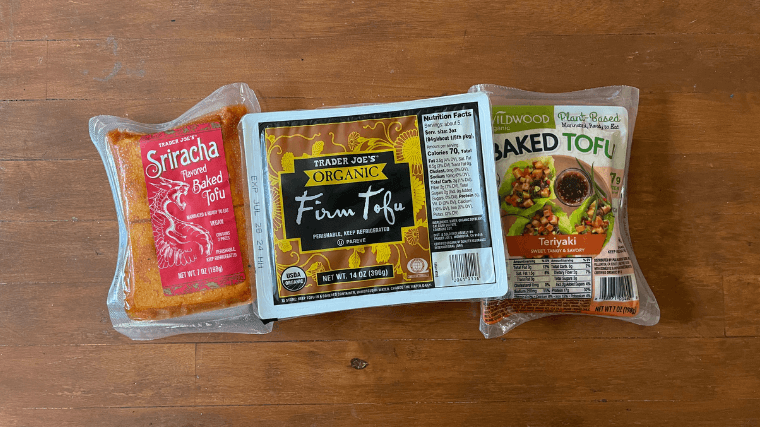
Sauté it, bake it, grill it, scramble it, or mix it into smoothies or desserts — simply add one scoop of protein powder and a few tofu right into a blender and also you’ve bought your self a nutritious high-protein pudding. Every cup of tofu offers 24 grams of protein, plus important minerals like calcium and iron. It additionally includes a wealthy amino acid profile. (1)
3. Quinoa
Quinoa is a nutrient-dense, gluten-free entire grain — appropriate for celiac sufferers or these with a gluten dysfunction — that’s an entire protein supply because of its means to offer all 9 important amino acids. (4)
Moreover, this plant protein accommodates important fatty acids, minerals, dietary fibers, nutritional vitamins, and carbohydrates. There are 24 grams of protein per cup, and it’s additionally wealthy in B nutritional vitamins, magnesium, iron, and fiber. (1)(5) This gluten-free grain is a superb addition or base for salads, bowls, soups, stews, and even folded into pizza dough to up your ‘za’s protein rely.
4. Plant-Based mostly Protein Powders
“Plant-based protein dietary supplements are good for these which are vegan, vegetarian, or have a dairy sensitivity,” says Austin Bou, registered dietitian and BarBend professional contributor. As such, the best vegan protein powders will help you enhance your protein consumption. These plant-based proteins make the most of protein from sources like peas, hemp, brown rice, and seeds (like pumpkin seeds, watermelon seeds, sunflower seeds, and extra). “Soy and pea protein isolates have the very best bioavailability amongst plant proteins,” provides Bou.


Servings sizings can fluctuate from model to model, however you’ll usually discover between 20 and 25 grams of protein per serving. (1) One factor to remember when perusing plant-based protein powders is that typically, relying on their protein supply, they might not present all important amino acids. Ideally, to current a balanced amino acid profile, search for manufacturers that make the most of a wide range of protein sources. (6)
5. Lentils
Lentils present 18 grams of protein per cup, and provide a strong punch of fiber, which will help help digestion, stabilize blood sugar, and promote emotions of fullness (which will help hold starvation at bay between meals). (1)(7)
Along with protein and fiber, lentils can present a variety of nutritional vitamins and minerals, like folate, iron, and magnesium. (8) In an raw half-cup serving, you’ll discover about 62 grams of carbohydrates and 360 energy, which will help gasoline you for upcoming fitness center periods or your weekend basketball recreation. They’re tremendous simple to include into meals, work nicely in soups, curries, salads, tacos, and may even be rounded and pounded into home made veggie burgers.
6. Edamame
Whether or not you’re trying to pack on muscle mass or are working in a calorie deficit, edamame generally is a worthwhile staple to maintain you fueled with balanced macros. Edamame are soybeans of their purest type — typically nonetheless of their fibrous pods that are peeled open to disclose the tasty beans inside — that supply protein, fiber, and important nutritional vitamins like folate and vitamin Okay. You’ll additionally rating minerals like iron and magnesium in every serving, making it a strong choice for these on a vegetarian food regimen trying to enhance their nutrient consumption. Moreover, it’s supply of wholesome fat, notably omega-3 fatty acids, that are touted for supporting coronary heart well being. Every cup of edamame affords 18 grams of protein and about 12 grams of fats, 8 grams of fiber, and 14 grams of carbohydrates. (9)(1)
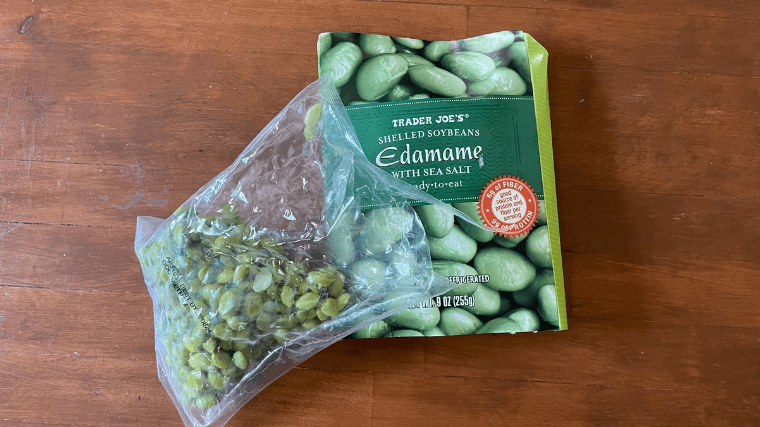

These beans are sometimes loved as an appetizer at Japanese eating places, however can be added to salads, soups, and stir-fry dishes, or blended into dips like a hummus various if chickpeas aren’t your jam. The pods will be steamed or boiled, and a little bit sprinkle of salt will help add to the flavour. What’s extra, they’re actually actually enjoyable to eat out of their pods.
7. Beans and Legumes
Beans are greater than only a musical fruit, they’re additionally versatile meals that present roughly 15 grams of protein per cup and are wealthy in advanced carbohydrates and fiber, which promote satiety. (1) From black beans and white beans to chickpeas and kidney beans, legumes get excessive reward for his or her heart-health advantages resulting from their fiber content material, which can assist decrease levels of cholesterol and help digestive well being. In actual fact, pea protein’s benefits even go as far as offering as much as 25% protein by quantity. (10)
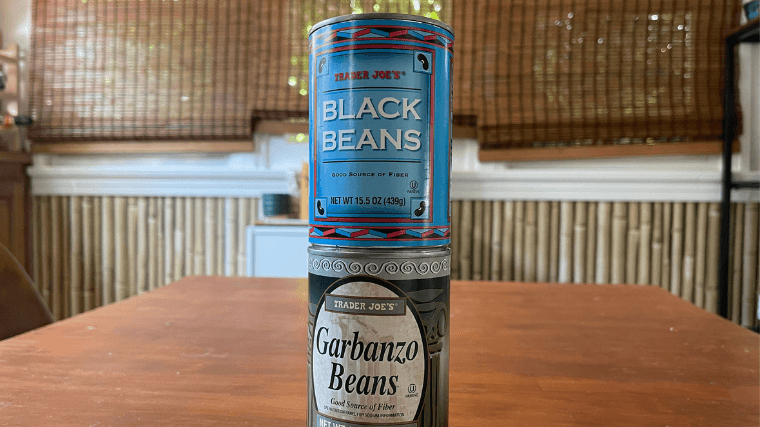

Past their vitamin, beans and legumes take middle stage in terms of mealtime and are utilized in many forms of delicacies. Soups, stews, curries, salads, wraps — even mashed up as a dip or used as a flour substitute in some high-protein dishes (hey, black bean brownies). Whereas we love their versatility and macros, they’ll trigger GI discomfort for some, so it’s greatest to introduce beans and legumes into one’s food regimen steadily.
8. Chickpeas
Chickpeas, also called garbanzo beans, present 14 grams of protein, 6 grams of fats, 40 grams of carbohydrates, 12 grams of fiber, and 266 energy per cup. (1)(11) These nutrient-dense legumes are additionally wealthy in nutritional vitamins and minerals like folate, iron, magnesium, and phosphorus, which help bone, coronary heart, and immune operate. (12)(13)(14)(15) Plus, they are often loved in all kinds of how, together with mashed-up right into a hummus, pan-roasted for a tough and crunchy snack, or added into soups and salads.
9. Nuts and Seeds
In the event you have a look into the pantries of health-conscious people, you’ll remember to discover some cashews, almonds, pistachios, and even hemp seeds.
[Related: Benefits of Hemp Seeds]
These nutrient-dense powerhouses provide wholesome fat, plant-based protein, fiber, and important nutritional vitamins and minerals. Not like saturated fat, which might elevate your LDL (dangerous) ldl cholesterol, nuts and seeds are notably excessive in heart-healthy monounsaturated and polyunsaturated fat, which can assist decrease dangerous levels of cholesterol and help cardiovascular well being. (16)
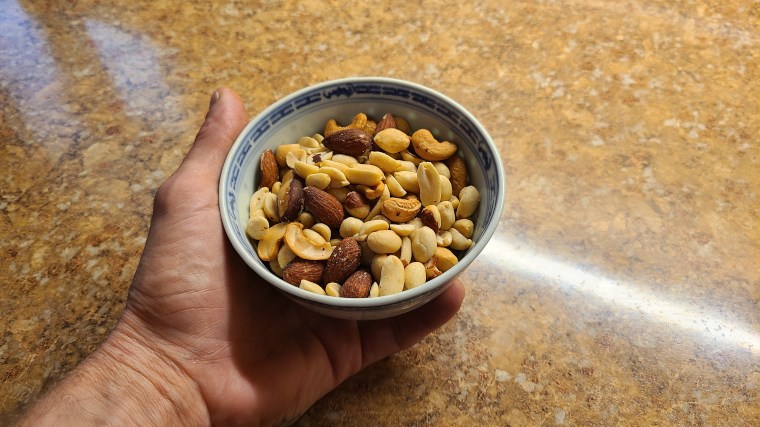

Filled with antioxidants, omega-3s, magnesium, and vitamin E, nuts and seeds can help mind operate, enhance pores and skin well being, and supply lasting power. (17) From cashews and almonds to chia seeds and flaxseeds, including a wide range of nuts and seeds to your food regimen generally is a easy, tasty technique to enhance your protein consumption and help a balanced food regimen.
Under is a fast breakdown of the protein content material present in among the hottest choices:
- Almonds: 6 grams of protein per ¼-cup (1)
- Cashews: 5 grams of protein per ¼-cup
- Walnuts: 4 grams of protein per ¼-cup
- Pistachios: 10 grams of protein per ¼-cup (18)
- Hemp Seeds: 10 grams of protein per 3 tablespoons
- Chia Seeds: 9 grams of protein per 3 tablespoons
- Flax Seeds: 6 grams of protein per 3 tablespoons
10. Nut Butters
Perhaps you grew up having a peanut butter and jelly sandwich packed in your faculty lunch. Or possibly you ate peanut butter smeared on celery sticks whereas watching morning cartoons. Nut butters, which comprise roughly 6 grams of protein per 2 tablespoons, will be simply unfold on toast, blended into the best protein shakes, or used as a dip with apples and different fruits and veggies. (1)
11. Dietary Yeast
Dietary yeast has change into my go-to popcorn topper because of its spectacular 6 grams of protein per 2 tablespoons. (1) In a half-cup serving — which might be approach an excessive amount of for my popcorn wants — you’ll get about 53 grams of protein, 400 energy, 7 grams of fats, 33 grams of carbohydrates, and 27 grams of fiber. (19) What’s extra, vitamin B12, which is commonly lacking from vegan and vegetarian diets, is commonly included in dietary yeast merchandise. (20)
Dietary yeast has a kind of nutty, tacky taste, which makes it very best for including to pasta, salads, nachos, scrambled eggs, pesto, chili, mashed potatoes — absolutely anything which may profit from a tacky taste and a few additional protein. Additionally, it’s secure for people who’ve dairy allergy symptoms or are lactose illiberal.
Remaining Phrase
Incorporating a wide range of plant-based protein sources into your food regimen can provide a balanced and nutrient-rich technique to meet your protein wants, even in case you’re aiming to construct muscle or improve your every day consumption. Meals like tempeh, tofu, quinoa, lentils, and nuts not solely present a big quantity of protein, but in addition provide a variety of nutritional vitamins, minerals, and antioxidants important for total well being.
Irrespective of your cooking or snacking type, the benefits of protein sourced from crops make it simpler than ever to take pleasure in nutritious, protein-packed meals with out counting on animal merchandise. So, whether or not you’re attempting to construct muscle or simply hold your abdomen from growling between meals, bear in mind: plant protein has your again (and biceps and core and quads and glutes). By mixing up your sources, you’ll help your well being, hold mealtime feeling contemporary and fascinating, and gasoline your physique with the standard protein it wants.
High Plant Sources of Protein FAQ
What plant is the very best in protein?
Soy merchandise resembling tempeh, tofu, and edamame comprise among the highest quantities of protein, offering as much as 34 grams of protein per cup. (1)
How do vegans get protein?
Vegans on the lookout for high-protein meals will wish to add a wide range of soy merchandise, beans, lentils, seitan, quinoa, seeds, nuts, and dietary yeast. They could additionally wish to take into account including in a vegan protein shake as nicely to assist them attain their every day protein consumption objective.
What are 5 sources of excessive plant-based protein?
Tempeh, tofu, lentils, edamame, and different beans and legumes are among the best meals to incorporate in a excessive plant-based protein food regimen.
How do you get protein as a vegetarian?
Along with plant-based proteins like tempeh, tofu, beans, legumes, and edamame, vegetarians can make the most of eggs and dairy merchandise (if tolerable) to assist them attain their protein objectives.
References
- Plant-based protein – A easy information to getting sufficient – Kendall Reagan Diet Middle. (2024b, Could 17). Kendall Reagan Diet Middle. https://www.chhs.colostate.edu/krnc/monthly-blog/plant-based-protein-a-simple-guide-to-getting-enough/
- Alexander, H. (2020, November 4). 5 advantages of a plant-based food regimen. MD Anderson Most cancers Middle. https://www.mdanderson.org/publications/focused-on-health/5-benefits-of-a-plant-based-diet.h20-1592991.html#:~:text=A%20plant%2Dbased%20diet%20reduces,and%20some%20mental%20health%20illnesses.
- FoodData Central: Tempeh, cooked. (2019, April 1). U.S. Division of Agriculture. https://fdc.nal.usda.gov/food-details/172467/nutrients
- Angeli V, Miguel Silva P, Crispim Massuela D, Khan MW, Hamar A, Khajehei F, Graeff-Hönninger S, Piatti C. Quinoa (Chenopodium quinoa Willd.): An Overview of the Potentials of the “Golden Grain” and Socio-Financial and Environmental Points of Its Cultivation and Marketization. Meals. 2020 Feb 19;9(2):216. doi: 10.3390/foods9020216. PMID: 32092899; PMCID: PMC7074363.
- FoodData Central: Quinoa, cooked. (2019, April 1). U.S. Division of Agriculture. https://fdc.nal.usda.gov/food-details/168917/nutrients
- Are Animal Proteins Higher for You Than Plant Proteins? (2019, January 16). Cedars-Sinai Weblog. https://www.cedars-sinai.org/blog/best-protein.html
- Prof. Dr. Otto Wilhelm Thomé. (1885). LENTIL. In Flora Von Deutschland, Österreich Und Der Schweiz. https://plants.usda.gov/DocumentLibrary/plantguide/pdf/pg_lecu2.pdf
- FoodData Central. (2023, October 26). U.S. Division of Agriculture. https://fdc.nal.usda.gov/food-details/2644283/nutrients
- FoodData Central: Edamame, cooked. (2024, October 31). U.S. Division of Agriculture. https://fdc.nal.usda.gov/food-details/2707436/nutrients
- Shanthakumar P, Klepacka J, Bains A, Chawla P, Dhull SB, Najda A. The Present State of affairs of Pea Protein and Its Software within the Meals Business. Molecules. 2022 Aug 22;27(16):5354. doi: 10.3390/molecules27165354. PMID: 36014591; PMCID: PMC9412838.
- FoodData Central: Chickpease. (2023, October 23). U.S. Division of Agriculture. https://fdc.nal.usda.gov/food-details/2644288/vitamins
- Ebara S. (2017). Dietary position of folate. Congenital anomalies, 57(5), 138–141. https://doi.org/10.1111/cga.12233
- Pasricha, S. R., Low, M., Thompson, J., Farrell, A., & De-Regil, L. M. (2014). Iron supplementation advantages bodily efficiency in girls of reproductive age: a scientific assessment and meta-analysis. The Journal of vitamin, 144(6), 906–914. https://doi.org/10.3945/jn.113.189589
- Al Alawi AM, Majoni SW, Falhammar H. Magnesium and Human Well being: Views and Analysis Instructions. Int J Endocrinol. 2018 Apr 16;2018:9041694. doi: 10.1155/2018/9041694. PMID: 29849626; PMCID: PMC5926493.
- Workplace of Dietary Dietary supplements – Phosphorus. (n.d.). https://ods.od.nih.gov/factsheets/Phosphorus-HealthProfessional/
- Saturated Fats. (2024, August 23). American Coronary heart Affiliation. https://www.heart.org/en/healthy-living/healthy-eating/eat-smart/fats/saturated-fats
- Nishi SK, Sala-Vila A, Julvez J, Sabaté J, Ros E. Influence of Nut Consumption on Cognition throughout the Lifespan. Vitamins. 2023 Feb 16;15(4):1000. doi: 10.3390/nu15041000. PMID: 36839359; PMCID: PMC9965316.
- FoodData Central: Nuts, pistachio nuts, uncooked. (2023, April 20). U.S. Division of Agriculture. https://fdc.nal.usda.gov/food-details/2515379/nutrients
- FoodData Central: NUTRITIONAL YEAST SUPERFOODS. (2019, December 6). U.S. Division of Agriculture. https://fdc.nal.usda.gov/food-details/719244/nutrients
- White ND. Vitamin B12 and Plant-Predominant Diets. Am J Life-style Med. 2022 Could 4;16(3):295-297. doi: 10.1177/15598276221076102. PMID: 35706595; PMCID: PMC9189588.
